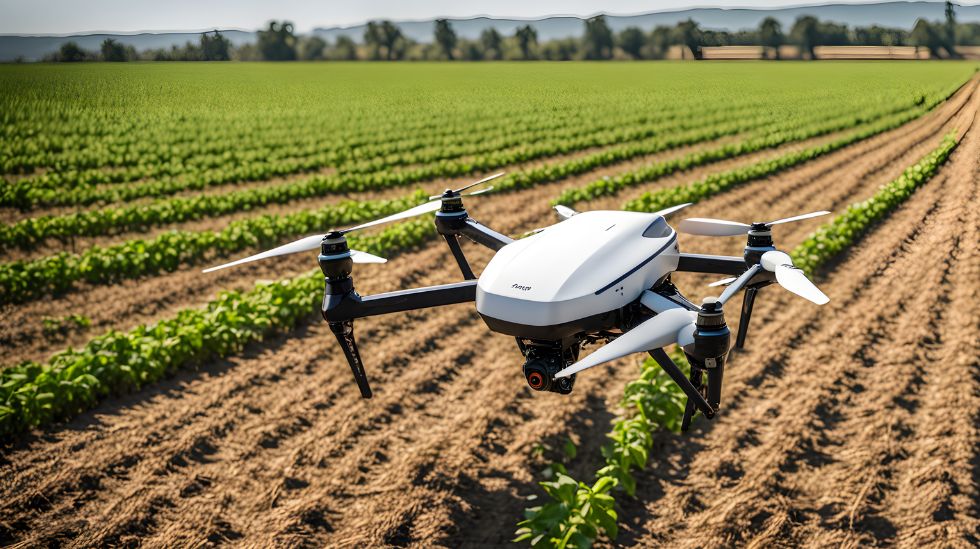Bangladesh’s economy. It may not dominate GDP the way it once did, but it still generates around 45 percent of the total employment and sustains countless others through allied activities. Farming remains not just an occupation but a way of life in villages across the country. Yet this crucial sector is under enormous strain. Population pressure, shrinking cultivable land, soil degradation, climate change, erratic rainfall, and the rising cost of fertilisers and pesticides are putting farmers in a tight corner. At the same time, the demand for food keeps climbing. The obvious question is: how do we grow more with less?
In this context, the phrase “precision agriculture” has started to appear in policy circles, research papers, and even media discussions. The idea is simple on the surface: instead of treating an entire field as if it were uniform, farmers use technology to apply the right input, in the right amount, at the right time, in the right place. This could mean using drones to monitor crop health, GPS systems to guide fertiliser application, or sensors to detect when the soil actually needs water. The objective is not only to increase yields but also to cut waste and reduce environmental damage.
At first glance, this sounds like exactly what Bangladesh needs. Our farmers often overuse fertilisers because they lack soil information, and they sometimes flood fields with more water than the crop requires. Both practices are expensive and unsustainable. If a farmer could know precisely how much nitrogen his/her paddy field requires, he/she could save money and improve yields while protecting the soil. Similarly, smarter irrigation could be a lifeline in the Barind Tract, where groundwater levels are falling fast.
The success stories from abroad are certainly inspiring. In parts of India, precision irrigation has helped farmers cut water use by nearly half while boosting harvests. In the United States and Australia, precision agriculture is practically standard on large farms. But here lies the problem: Bangladesh’s agriculture does not resemble the vast farms of the American Midwest. Ours is a land of smallholders, most owning less than a hectare. For a farmer with half an acre, the prospect of buying a drone or sophisticated soil sensor is unrealistic.
This raises the first big question: who exactly will benefit from precision agriculture in Bangladesh? If it is introduced only in large commercial farms, it may widen inequality in the countryside. On the other hand, if adapted cleverly, it could give small farmers tools to make better decisions and survive in an increasingly uncertain climate.
Affordability is the second hurdle. Even the simpler versions of precision farming – like satellite-based crop health maps – cost money to generate and interpret. Farmers are already struggling with rising prices of fertilisers and diesel; convincing them to pay for digital services will not be easy. Community models might be one way forward, where a group of farmers share equipment or purchase services collectively. Experiments have already been done with drone-rental services, where farmers pay a fee for crop spraying instead of owning the machine. These kinds of innovations could make technology more accessible.
Then comes the matter of knowledge. Precision agriculture relies on data. But what good is a colourful map of soil nutrients if the farmer does not understand how to read it? Bangladesh has made strides in digital literacy – many farmers now use mobile phones to check market prices or weather forecasts – but interpreting advanced data requires new skills. Supports from extension services, cooperatives, and NGOs will be needed, not only to train farmers but also to build trust in these technologies. Convincing farmers to change their perception where they often rely on personal experience passed down through generations requires patience and demonstration.
The potential is real despite these hurdles. Bangladesh has already shown how technology can leapfrog barriers. The largest mobile financial service (MFS) of the country, i.e., bKash, is now part of everyday life, although once thought too complicated for rural communities. Why should agriculture be any different? Imagine a future where a farmer in Rangpur receives a text alert warning of a pest outbreak, or a coastal farmer in Satkhira gets soil salinity readings on her phone before deciding which variety of rice to plant. These are not science fiction; they are within reach if the right policies and partnerships are in place.
It would be still misleading to suggest that precision agriculture alone will solve the productivity puzzle. High yields also depend on good infrastructure, fair markets, and supportive policies. What use is a perfectly grown crop if as much as a third of it is lost after harvest – often due to poor storage and transport? Or if the farmer cannot get a fair price at the market? Equally, credit access and crop insurance are critical. Without financial security, many farmers will not risk trying out new methods how promising they look on paper.
The environmental dimension also needs to be taken into consideration. Productivity cannot come at the expense of sustainability. Bangladesh is one of the countries – most vulnerable to climate change. The incidences such as the rising sea levels and erratic weather patterns are already reshaping agriculture. Precision farming can ease the strain on our water and soil. But on its own it is not enough – we also need climate-resilient crop varieties, more diversity beyond rice, and the patient work of restoring the ecosystems that shield us from floods and storms. Productivity and resilience must go hand in hand.
So, is precision agriculture the answer to higher productivity? Probably not in isolation. But could it be part of the answer? Adaptation is the key where it must find its own strategies, suited to smallholders, fragmented plots, and limited resources. This means focusing on low-cost, scalable tools, building cooperative models, and ensuring policies are inclusive rather than exclusive.
If done right, precision agriculture could help farmers do more with less: more food with less water, less fertiliser, and less land. Yes, these tools can build resilience to climate stress and give farmers a fairer shot in markets. Still, technology on its own will not fix everything. The real test is how well we fit it into farmers’ daily realities – the timings of irrigation, the cash flow after a bad season, the price at the haat. Ultimately, the story of Bangladesh’s agriculture will not be told by hardware; it will be told by farmers, using practical tools that lighten the load and lift yields.
Zubayer Hossen, Programme Director, SANEM.
Email: zubayerhossen14@gmail.com



RECENT COMMENTS